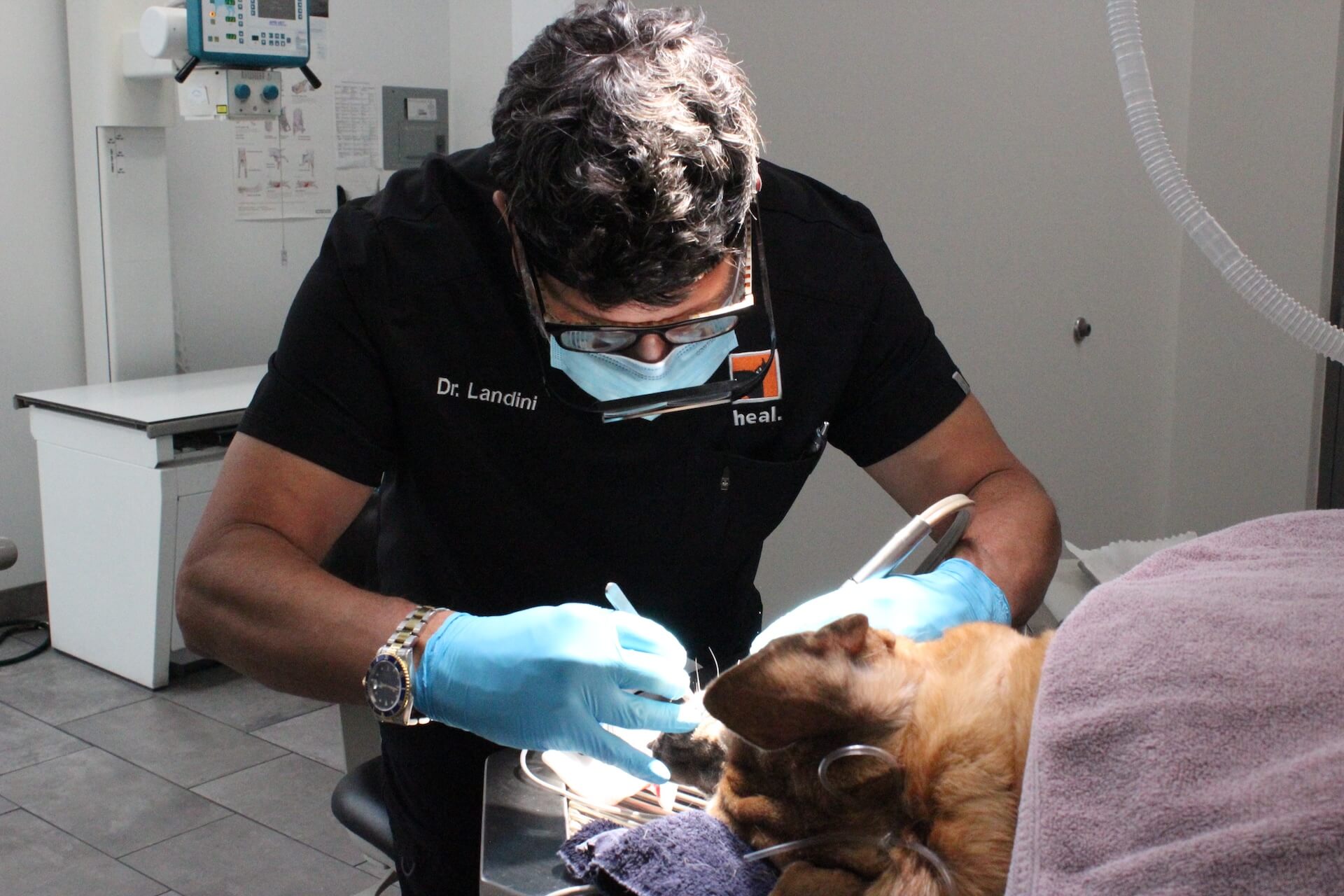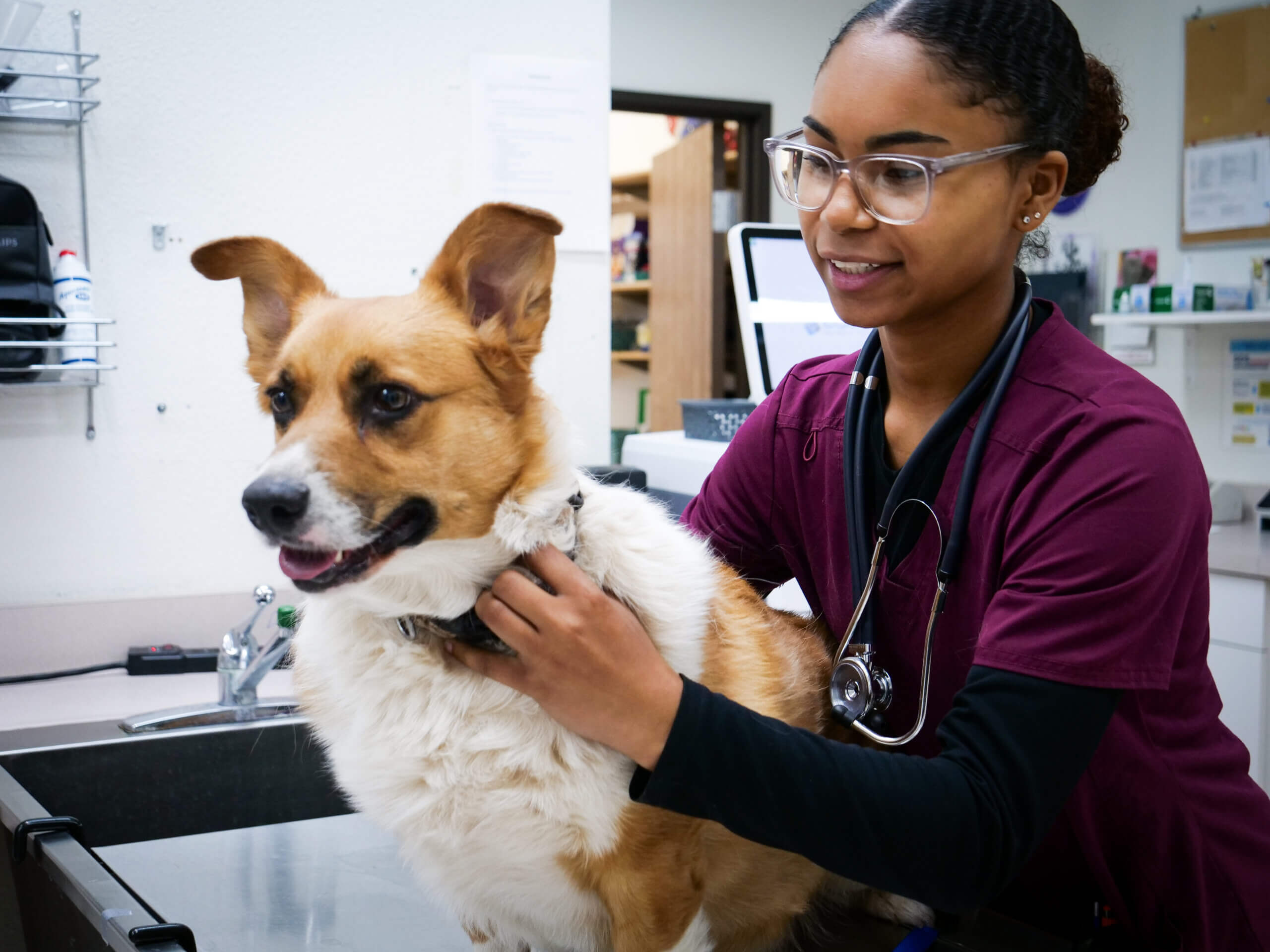All About Veterinarian Surgical Treatment: Understanding the Relevance of Specialist Look After Your Family pets
Veterinary surgical treatment is an important component of pet medical care. It incorporates numerous procedures, from regular elective surgical treatments to immediate interventions. Comprehending the details of these surgeries can help family pet owners make informed decisions. The preparation, implementation, and recuperation phases are crucial for making sure the well-being of pets. With proper understanding, owners can browse the intricacies of veterinary treatment. What aspects should be considered prior to a family pet undergoes surgery?
Sorts Of Vet Surgeries
When a pet requires medical intervention, understanding the different kinds of veterinarian surgeries can help family pet owners make informed choices. Veterinary surgical treatments can be generally classified into three major types: optional, urgent, and emergency situation surgeries. Optional surgeries, such as spaying or neutering, are intended procedures that are not quickly life-threatening. Immediate surgeries, like those for international body elimination, should be performed soon but are not dangerous in the moment. Emergency situation surgical procedures, such as those addressing extreme injury or interior blood loss, are critical and need immediate attention.Additionally, surgeries can vary in intricacy, ranging from minimally invasive laparoscopic treatments to a lot more comprehensive open surgeries. Each kind of surgical procedure carries its very own risks and recuperation processes. Recognizing these groups allows pet dog owners to take part in meaningful conversations with veterinarians, bring about far better end results for their precious animals.
Preparing for Your Pet dog's Surgery
Planning for an animal's surgery includes an extensive list to assure all fundamentals are covered. Efficient interaction with the veterinarian is important for understanding the treatment and any kind of required pre-operative actions - tplo surgery. In addition, having clear post-operative treatment directions will certainly aid proprietors provide the most effective assistance for their recouping family pets
Pre-Surgery Checklist Essentials
Ensuring a smooth surgical experience for an animal requires mindful preparation and attention to detail. A pre-surgery checklist is important for pet owners to adhere to. Initially, verifying the set up surgical treatment date and time is crucial. Proprietors need to also confirm that their animal has actually not eaten according to the vet's guidelines, usually for 8-12 hours prior to surgical treatment. Collecting essential clinical documents, including inoculation history, is essential for the veterinarian's testimonial. It is likewise a good idea to prepare a comfortable room in the house for the animal's recuperation after surgical treatment. Ultimately, owners need to have a plan for transport to and from the veterinary facility, seeing to it that the pet is safe and secure and comfortable throughout the trip. Following these steps can substantially boost the surgical experience.
Communicating With Your Vet

Effective interaction with the veterinarian is necessary for a successful medical experience for pet dogs. Proprietors must be prepared to review their pet dog's clinical background, including any type of pre-existing conditions, drugs, and allergies. This details assists the veterinarian examine dangers and tailor the surgical plan appropriately. Furthermore, pet owners should ask questions pertaining to the procedure, anesthesia, and expected end results to ensure they fully recognize the process. Clarifying any kind of uncertainties can ease stress and anxiety for both the pet and the owner. It is additionally crucial to interact any kind of behavioral adjustments or concerns observed in the animal leading up to the surgical procedure. Inevitably, clear dialogue fosters depend on and cooperation, making sure that pet dogs obtain the most effective feasible treatment throughout their surgical trip.
Post-Operative Treatment Instructions
After reviewing the operation with the vet, pet proprietors should concentrate on post-operative care directions to assist in a smooth healing for their family pets. These guidelines generally include keeping track of the medical site for indications of infection, such as redness or discharge. Family pets may require to be maintained calm and constrained to stop excessive motion that might disrupt recovery. Pain administration is crucial, so proprietors ought to adhere to the veterinarian's advice on administering medicines. Furthermore, dietary restrictions might be advised to stay clear of gastrointestinal upset. Normal follow-up consultations are very important to assure appropriate recovery and address any kind of worries. By adhering to these post-operative treatment guidelines, pet dog owners can substantially add to their family pet's recovery and total health.
The Surgery Explained
The surgical procedure for animals incorporates essential actions that guarantee their security and healing. Pre-surgery preparations are essential for decreasing threats, while post-operative treatment guidelines play an important duty in advertising recovery. Recognizing these components helps family pet proprietors navigate the medical experience better.
Pre-Surgery Preparations
Before an animal goes through surgery, several crucial prep work have to happen to ensure a secure and effective treatment. Initially, a thorough veterinary evaluation is vital to evaluate the pet dog's overall wellness and determine any type of possible threats. This may consist of blood tests, imaging, or various other diagnostics. The veterinarian will likewise go over anesthetic choices tailored to the pet's certain requirements. Additionally, pet proprietors are commonly instructed to hold back food and water for a defined time prior to surgical procedure to reduce the danger of difficulties throughout anesthesia. It is essential for proprietors to give a full case history, including any type of medicines or allergic reactions, guaranteeing the medical team has all needed details. Proper interaction and adherence to pre-surgery standards can greatly enhance the result of the treatment.
Post-Operative Treatment Standards
Appropriate post-operative care is important for ensuring a family pet's recuperation complying with surgery. After the treatment, animals should be kept an eye on very closely for any kind of indicators of problems, such as excessive bleeding, swelling, or uncommon behavior. It is essential to follow the veterinarian's guidelines regarding medications, including discomfort reducers and antibiotics. Pets should be maintained in a silent, comfortable atmosphere to lower stress and anxiety and promote healing. Restricting task is crucial; short, leashed walks might be necessary, but leaping or running need to be stayed clear of. Routine follow-up appointments must be arranged to assess the recovery procedure. Additionally, the surgical website should be kept tidy and dry, with any kind of signs of infection reported to a vet immediately. Abiding by these guidelines improves recovery outcomes.
Anesthesia and Pain Management
Efficient anesthetic and pain management are necessary parts of veterinary surgical procedure, making sure that animals stay comfy and safe throughout the treatment. Veterinarians evaluate each animal's specific demands, taking right into account elements such as age, weight, health and wellness status, and the sort of look at this web-site surgical procedure being performed.Anesthesia procedures generally consist of a mix of pre-anesthetic drugs, induction agents, and inhalant anesthetics, permitting exact control over the animal's degree of consciousness. Surveillance during surgical procedure is crucial; veterinarians continually observe vital signs to deal with any kind of possible difficulties promptly.Pain monitoring strategies may entail opioids, non-steroidal anti-inflammatory drugs (NSAIDs), and anesthetics, tailored to the pet dog's particular circumstance. This multifaceted strategy helps minimize pain and advertises a smoother medical experience. By prioritizing reliable anesthesia and discomfort administration, veterinary professionals boost the total well-being of pet dogs going through procedures, guaranteeing they receive the greatest criterion of treatment.
Post-Operative Care and Recuperation
Adhering to surgical procedure, the focus changes to post-operative treatment and recuperation, which is essential for ensuring a pet dog's safe go back to typical activities. Throughout this duration, family pets need a silent, comfortable their explanation setting to aid healing. Proprietors must very closely check their animals for any type of indications of pain or uncommon behavior.Veterinary guidelines commonly consist of certain instructions connected to medication administration, injury treatment, and nutritional adjustments. It is vital to adhere to these suggestions to lessen difficulties and advertise recovery. Pet dogs might require to be limited from energetic tasks, such as running or jumping, during their recovery period (veterinary cardiologist near me).Regular follow-up consultations with the veterinarian permit surveillance of the family pet's development and prompt modifications to the treatment plan. Giving psychological support and friendship can also boost a pet dog's recovery experience, aiding to alleviate stress and anxiety and anxiety. Overall, attentive post-operative treatment plays a substantial function in achieving a successful recovery
Recognizing Complications After Surgical Treatment
Just how can pet owners identify complications after surgical treatment? Recognition of certain indications is crucial for making certain the health of animals during healing. Typical indications consist of too much swelling, redness, or discharge at the medical site, which may represent infection. Additionally, relentless discomfort, suggested by yawping or hesitation to move, must trigger immediate attention. Adjustments in cravings or water consumption can additionally show problems; a decrease in these behaviors might signify discomfort or distress.Moreover, family pet proprietors ought to monitor their animals for any kind of uncommon habits, such as lethargy or trouble breathing, as these can be indications of major issues. Vomiting or diarrhea following surgical procedure may call for immediate vet analysis. Recognizing these difficulties early can greatly affect a pet dog's recuperation procedure, emphasizing the significance of watchfulness and timely communication with a veterinarian for any concerning signs.
The Duty of Vet Professionals in Surgical Treatment
Veterinary specialists play a crucial role in making certain the safety and success of procedures for pet dogs, especially adhering to surgical procedure when keeping an eye on and care are vital. These specialists consist of veterinarians, vet specialists, and support team, all of whom contribute specialized abilities to the medical process.Before surgical treatment, veterinarians perform extensive analyses to examine the pet dog's health and wellness, making sure that any type of hidden problems are handled. Throughout the treatment, the surgical team offers anesthesia, preserves sterilized environments, and monitors essential indicators, all vital for minimizing risks.Post-operative treatment is just as significant; vet professionals observe for difficulties, take care of discomfort, and overview proprietors on recuperation methods. Their expertise enables them to acknowledge early indicators of distress or infection, making certain prompt intervention. Eventually, the collaborative initiatives of veterinary experts in medical treatment foster a secure atmosphere, advertising the health of family pets throughout the medical trip.

Regularly Asked Inquiries
How Do I Select the Right Vet Surgeon for My Animal?
Picking the ideal vet doctor includes investigating qualifications, checking out reviews, and examining the facility's atmosphere. It is important to assess the specialist's experience with particular treatments and their interaction design when choosing.
What Prevail Misconceptions About Veterinarian Surgeries?
Common misunderstandings concerning vet surgeries consist of beliefs that they are always Get the facts risky, unnecessary, or just for emergency situations. Several pet dog proprietors take too lightly the benefits of preventative treatments and the ability entailed in vet surgical treatment.
Just How Much Will My Pet dog's Surgical treatment Expense?
The expense of a pet dog's surgery can differ considerably based on aspects such as the kind of treatment, the vet's experience, and geographic area (canine tplo surgery). Normally, expenses vary from a few hundred to several thousand bucks

Can My Pet Eat Before Surgical Treatment?
Before surgical treatment, it is typically encouraged that animals avoid consuming for a certain duration. This fasting helps in reducing the threat of difficulties throughout anesthetic. Proprietors must consult their veterinarian for exact instructions tailored to their family pet's demands.
What if My Pet Dog Has Pre-Existing Health Conditions?
When a pet has pre-existing health problems, it's crucial for the vet to evaluate these factors before surgical procedure. This examination assurances proper precautions are taken, reducing dangers and maximizing the family pet's total safety during the procedure.